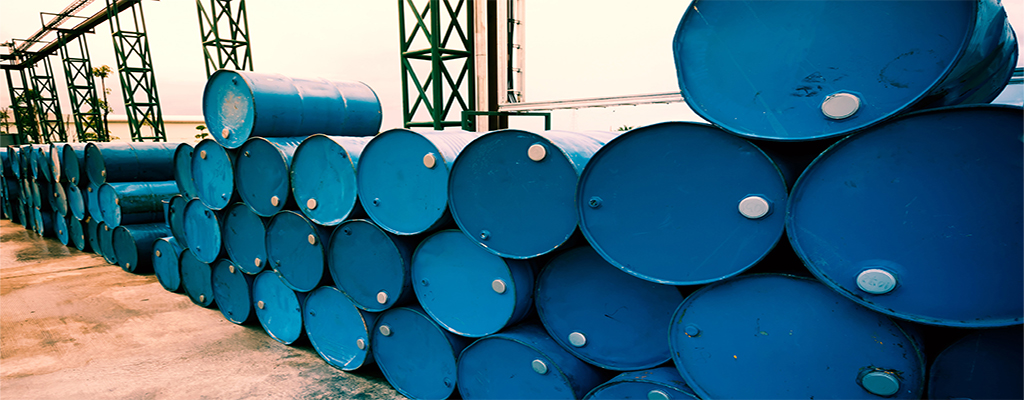Brent Near Month High Before Pullback

Energy trading activity remains seasonally thin in the ongoing summer season, with traders turning their focus towards broader macroeconomic news and away from fundamentals. Last week, Federal Reserve Chair Jerome Powell delivered his August speech at Jackson Hole, which reinforced expectations of a 25-basis point cut in interest rates in September. The latest government data revealed that the U.S. labor market has lost momentum while inflation remains elevated. However, commodity experts at Standard Chartered have predicted that downside economic growth risks are likely overstated, with no recession likely to hit in the current year or in 2026.
Brent crude for October delivery settled at $68.80 per barrel (bbl) on Monday’s close, the highest settlement price in nearly a month before sliding down to $67.74/bbl in Wednesday’s intraday trading. Brent prices briefly managed to break out of the tight weekly intra-day trading range of $3.46/bbl, but faced resistance at the 50-day moving average. Meanwhile, the relative pressure on WTI crude continues, with the Brent-WTI spread remaining close to $4.00/bbl.
U.S. President Donald Trump made good on his threat to slap India with an extra 25% tariff on exports to the United States on Wednesday, bringing the total tariff rate to 50%. Trump has accused India of financing Russia’s war in Ukraine by buying large quantities of Russian oil, a claim New Delhi has labeled as ‘‘unfair, unreasonable and unjustified.’’ India has accused the West of hypocrisy, saying the U.S. and Europe continue to import large quantities of Russian commodities.
India's imports from Russia have surged ever since the war began three and a half years ago, jumping from $8.25 billion in 2021 to $65.7 billion in 2024, according to India’s The Business Standard. Crude oil has been the most important driver of this growth, with India importing Russian oil worth $52.2 billion in 2024, a massive increase from just $2.31 billion in 2021. Meanwhile, India's imports of Russian coal clocked in at $3.5 billion in 2024, up from $1.12 billion four years ago while fertilizer imports hit$1.67 billion in 2024 from $483 million in 2021.
In sharp contrast, Europe and the U.S. have cut purchases of Russian goods quite dramatically. Indeed, Eurostat data shows that EU imports from Russia fell 6% from the beginning of 2022 through the first quarter of the current year. The bloc imported commodities worth 8.74 billion euros ($10.11 billion) in Q1 2025 compared to 30.58 billion euros in the first quarter of 2021. Europe imported Russian oil worth 1.48 billion euros in Q1 2025, much lower compared to 14.06 billion euros it spent in Q1 2021. Europe currently imports ~17% of its natural gas, including LNG plus TurkStream pipeline gas, from Russia, down from 48% in Q1 2021. Russian LNG exports to Europe in the first half of the current year clocked in at 7.9 million tons, good for a 13% Y/Y decline. Meanwhile, data from the U.S. Census Bureau and U.S. Bureau of Economic Analysis shows that U.S. imports from Russia slumped to $2.5 billion in the first six months of the current year, down from $14.14 billion in H1 2021, according to Reuters.
However, India appears unfazed by Trump’s punitive tariffs, with India’s ambassador to Russia, Vinay Kumar, saying in an interview with Russia’s TASS news agency on 24 August that “Indian companies will continue buying from wherever they get the best deal”.
Europe Gas Prices Surge
European gas prices have staged a strong rally after optimism over a successful resolution of the Russia-Ukraine conflict faded following the talks between Presidents Trump and Putin on 15 August. Dutch Title Transfer (TTF) for September delivery climbed 8.0% w/w to a 20-day high of EUR 33.774 per megawatt hour (MWh) on Monday, before paring back gains to settle at $32.53/MWh on Wednesday. According to Gas Infrastructure Europe (GIE), European gas inventories stood at 88.402 billion cubic metres (bcm) on 24 August, representing 76% of technical maximum capacity. However, injection rates into storage slowed down to 2.3713 bcm w/w, but remained higher than the 5-year average at 2.2803 bcm.
Meanwhile, first gas from Golden Pass LNG in Texas, a joint venture between QatarEnergy (70%) and Exxon Mobil (30%), is expected at the end of 2025 into early 2026, after it was postponed by six months following a contractor dispute. The project is expected to meet demand in both Europe and Asia next year, although full export capacity of 18 million tonnes per year (mtpa) is likely to be achieved much later.
By Alex Kimani for Oilprice.com










































